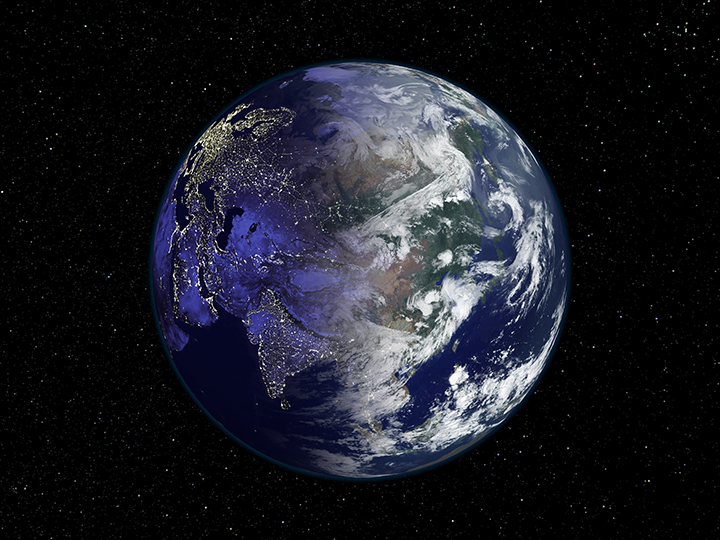Earth Globe Asia

Image Credit: Data-AVHRR, NDVI, Seawifs, MODIS, NCEP, DMSP and Sky2000 star catalog; AVHRR and Seawifs texture-Reto Stockli; Visualization-Marit Jentoft-Nils
As Earth spins on its axis every 24 hours, one side of the planet is illuminated by light from the Sun. This gives one-half of the planet its day, and at the same time the other half is immersed in night. While the Earth does not naturally emit any visible light, technology from humans has certainly made our planet brighter when facing away from the Sun. This image is a composite of two sets of data— one of the globe reflecting sunlight and another of the globe in full darkness, showing only the bright lights of inhabited areas.
Listen to audio version (English)
Download high-res image file | Download caption as .zip file
Globo Terrestre Asia
Al girar la Tierra sobre su eje cada 24 horas, un lado del planeta está iluminado por la luz del Sol. Esto le da a la mitad del planeta su día, y, al mismo tiempo la otra mitad se sumerge en la noche. Aunque la Tierra no emite luz visible naturalmente, la tecnología de los seres humanos, sin duda han hecho que nuestro planeta sea más brillante del lado opuesto al Sol. Esta imagen es una composición de dos conjuntos de datos - uno del globo reflejando la luz del Sol y otro del globo en plena oscuridad, mostrando sólo las luces brillantes de las zonas habitadas.
Download high-res image file | Download caption as .zip file



